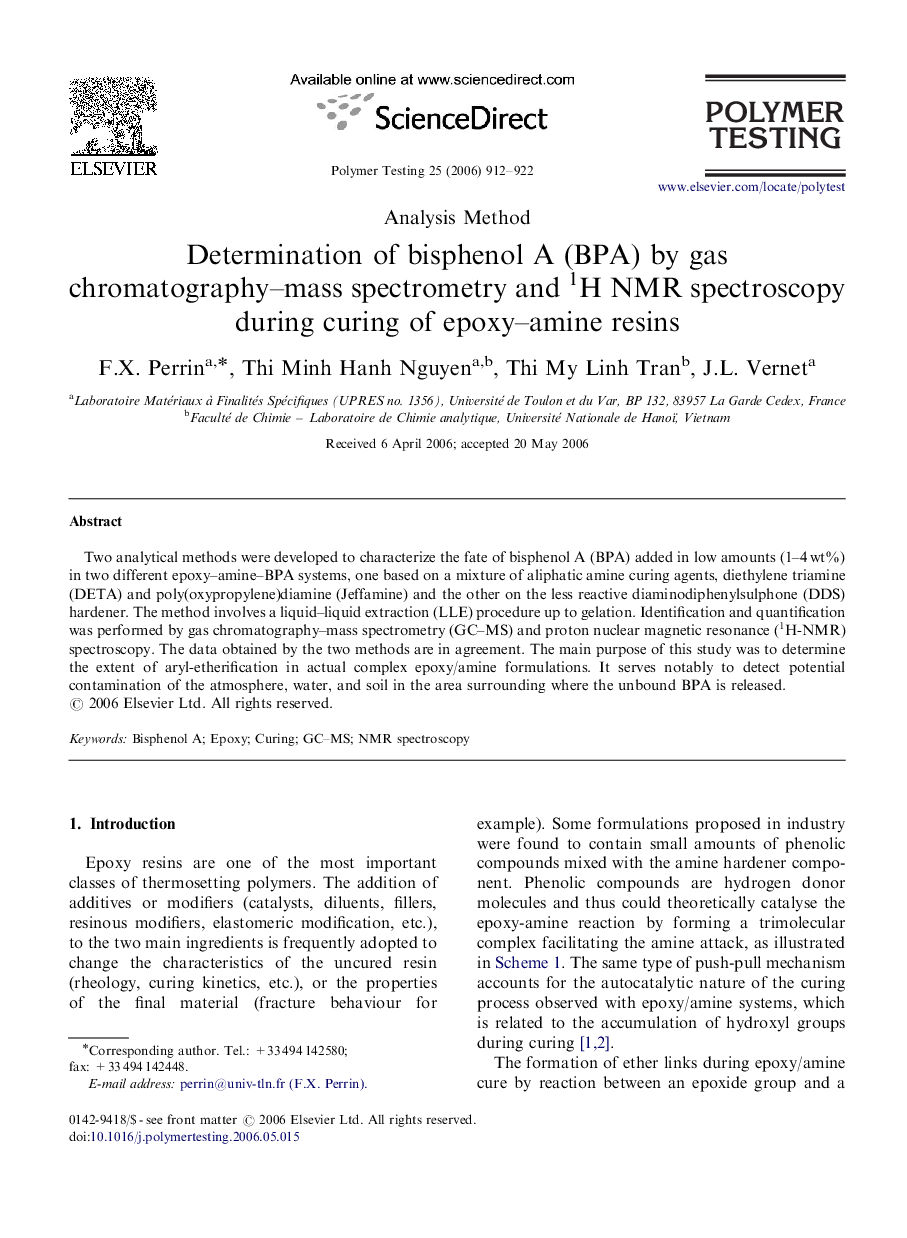| Article ID | Journal | Published Year | Pages | File Type |
|---|---|---|---|---|
| 5207463 | Polymer Testing | 2006 | 11 Pages |
Abstract
Two analytical methods were developed to characterize the fate of bisphenol A (BPA) added in low amounts (1-4Â wt%) in two different epoxy-amine-BPA systems, one based on a mixture of aliphatic amine curing agents, diethylene triamine (DETA) and poly(oxypropylene)diamine (Jeffamine) and the other on the less reactive diaminodiphenylsulphone (DDS) hardener. The method involves a liquid-liquid extraction (LLE) procedure up to gelation. Identification and quantification was performed by gas chromatography-mass spectrometry (GC-MS) and proton nuclear magnetic resonance (1H-NMR) spectroscopy. The data obtained by the two methods are in agreement. The main purpose of this study was to determine the extent of aryl-etherification in actual complex epoxy/amine formulations. It serves notably to detect potential contamination of the atmosphere, water, and soil in the area surrounding where the unbound BPA is released.
Related Topics
Physical Sciences and Engineering
Chemistry
Organic Chemistry
Authors
F.X. Perrin, Thi Minh Hanh Nguyen, Thi My Linh Tran, J.L. Vernet,
